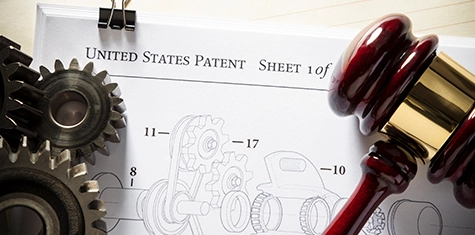The United States Patent and Trademark Office (USPTO) issued inventorship guidance for AI-assisted inventions. The guidance, which the USPTO issued on February 13, 2024, explained that “while AI-assisted inventions are not categorically unpatentable, the inventorship analysis should focus on human contributions, as patents function to incentivize and reward human ingenuity.” The guidance also made clear that AI cannot be named as inventor on patents by itself, but when an invention is created with the help of AI, a human being must have made a “significant contribution” to the invention for patent protection to be available.
Key Takeaways:
The AI system cannot be a named inventor.
A patent application that names an AI system as an inventor will be rejected for improper inventorship.
Inventors must be human beings.
Only natural persons qualify as “inventors” under U.S. patent law. Thaler v. Vidal, 43 F.4th 1207 (Fed. Cir. 2022).
Inventions created with the assistance of AI are not necessarily unpatentable.
AI-assisted inventions may be patentable if at least one human being named as inventor made a “significant contribution” to conception of the claimed invention.
Significant contribution must be evidenced.
A human being must contribute significantly to every claim in the patent application or patent.
- The USPTO acknowledges that assessing when a human being “significantly contributed” to an invention may be difficult and there is “no bright-line test.”
- The guidance referenced the three-part test set forth in Pannu v. Iolab Corp., 155 F.3d 1344, 1351 (Fed. Cir. 1998) to provide some assistance on what qualifies as a significant contribution in the context of AI-assisted inventions.
- The guidance highlighted that “[a] natural person who only presents a problem to an AI system may not be a proper inventor or joint inventor of an invention identified from the output of the AI system. However, a significant contribution could be shown by the way the person constructs the prompt in view of a specific problem to elicit a particular solution from the AI system.” Or if the individual conducted an experiment with the output from the AI system and conceived the invention during the experiment, that may give rise to a significant contribution.
Significant contribution will likely spur litigation.
Sorting out the contribution of the human being versus the AI system will not be easy or straightforward and will lead to disputes.
Attorneys will need to understand how AI was used and gather the appropriate evidence.
The guidance explained that those associated with a patent application have a duty to disclose relevant information and conduct a reasonable inquiry to make sure the information given to the USPTO is correct.
- Attorneys will need to investigate whether and how a patent applicant used AI and gather records such as the prompts that were used with the AI system.
- Disputes will likely arise in litigation regarding inventorship and whether the patent should be found unenforceable because the AI contributions were not disclosed.


